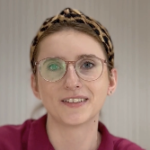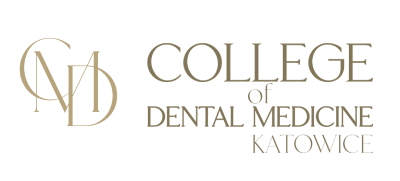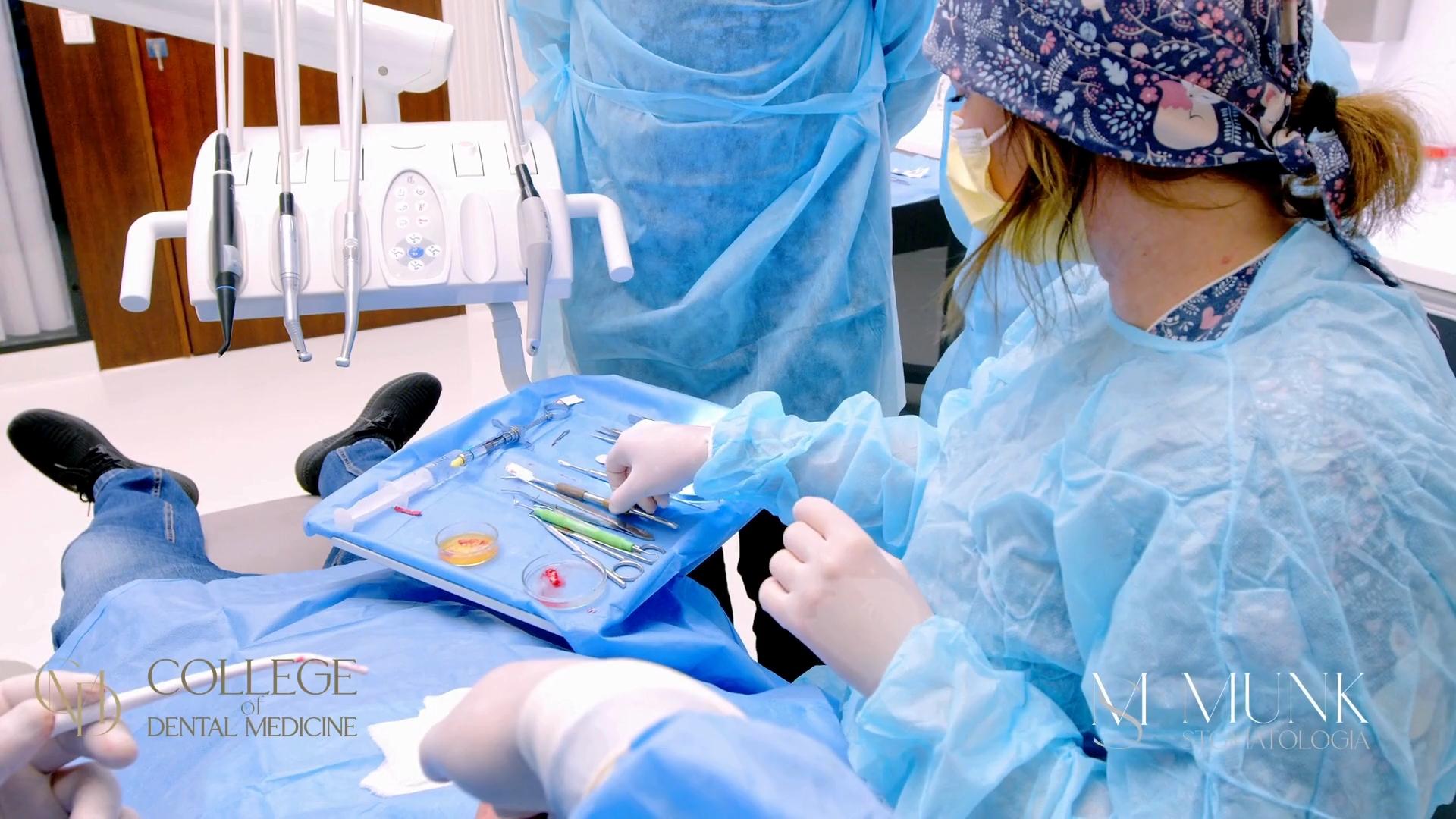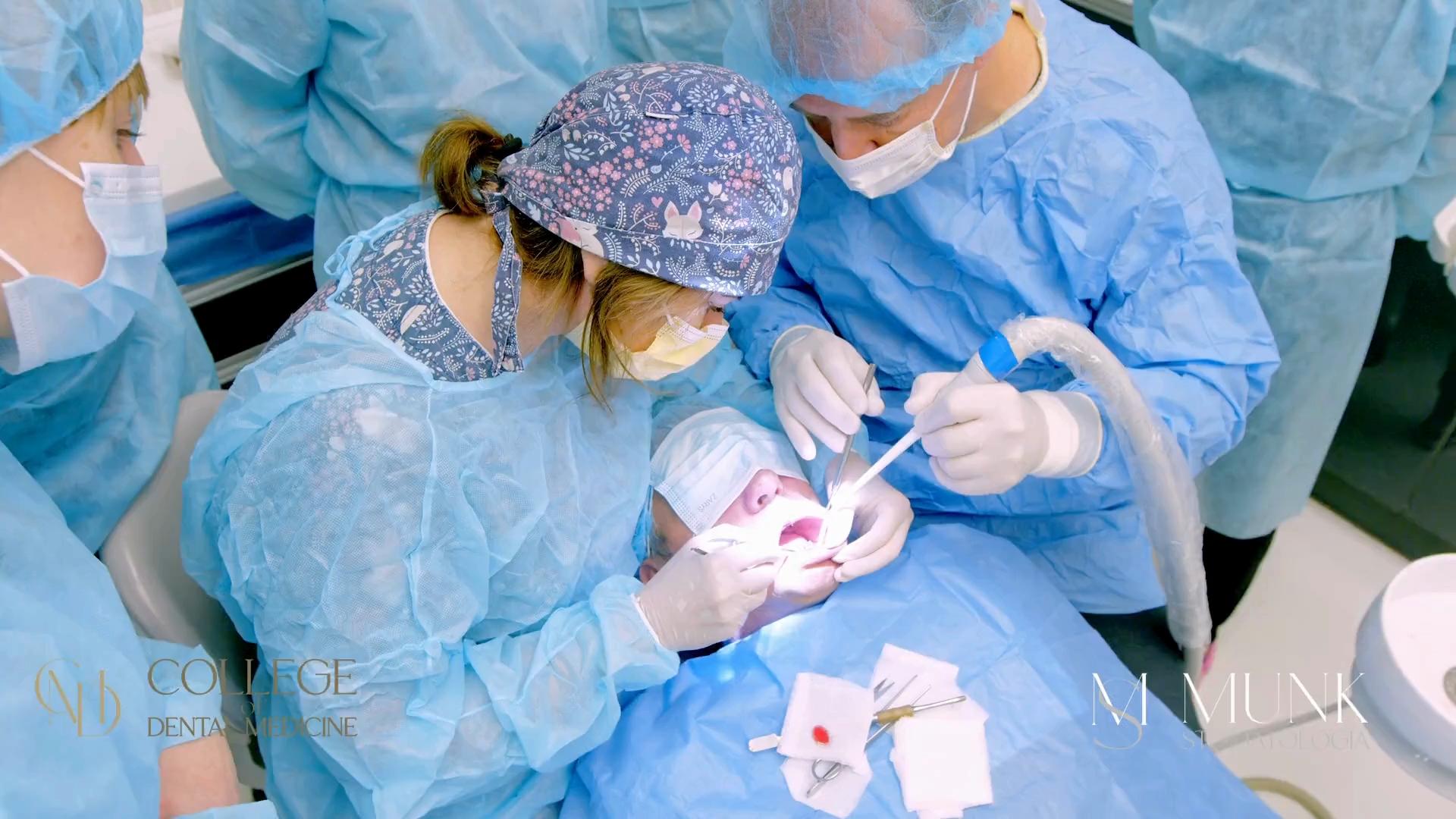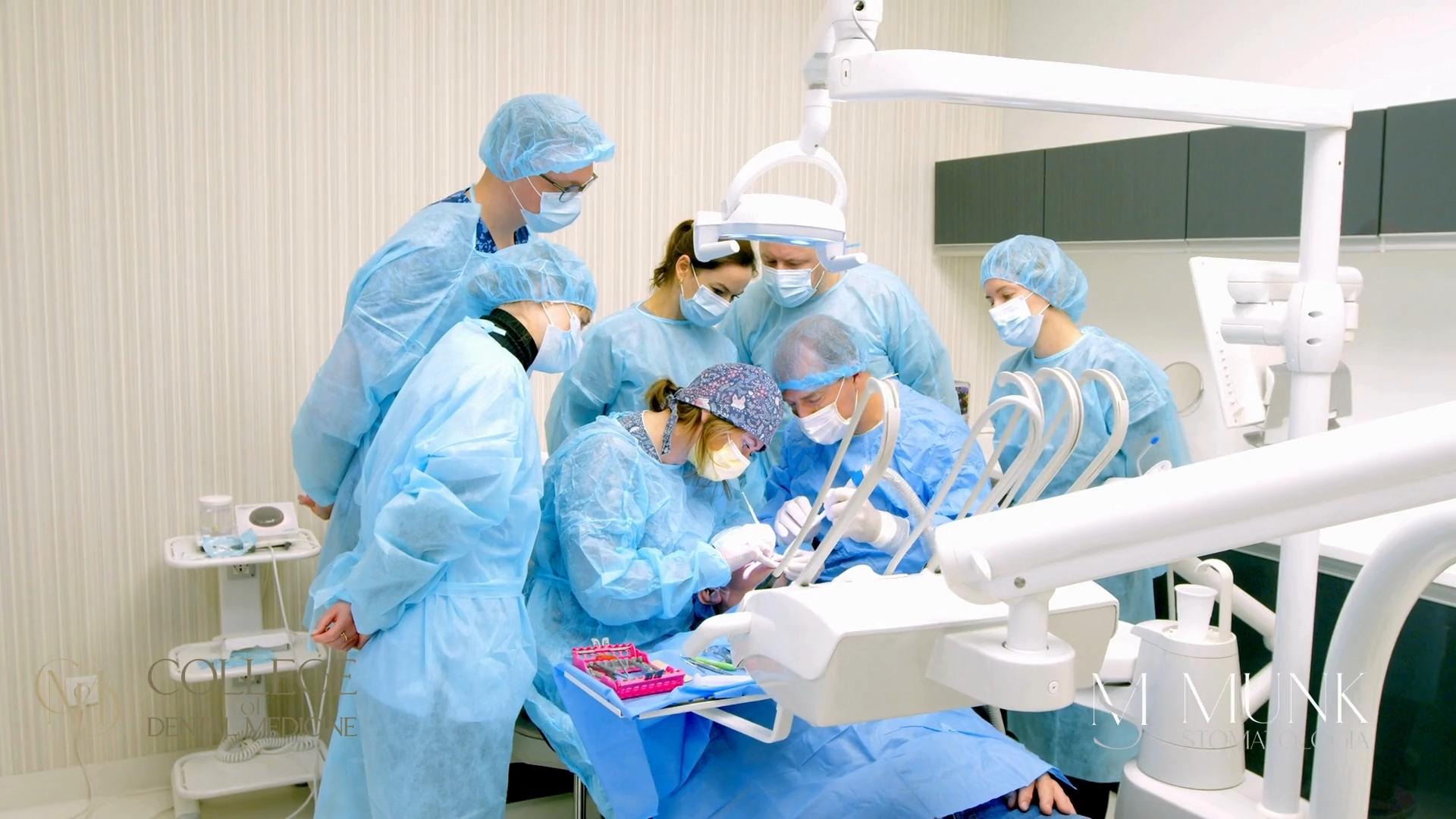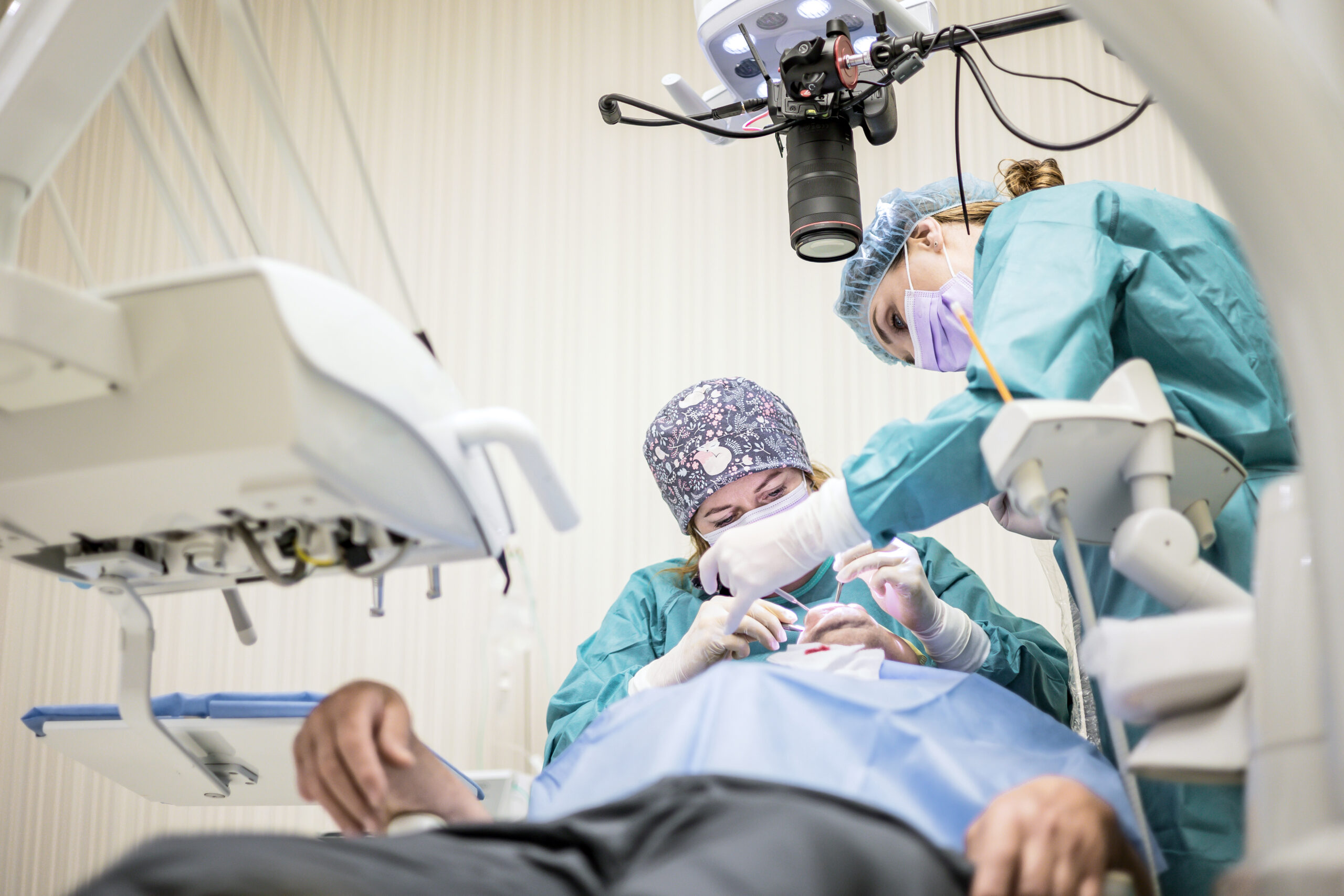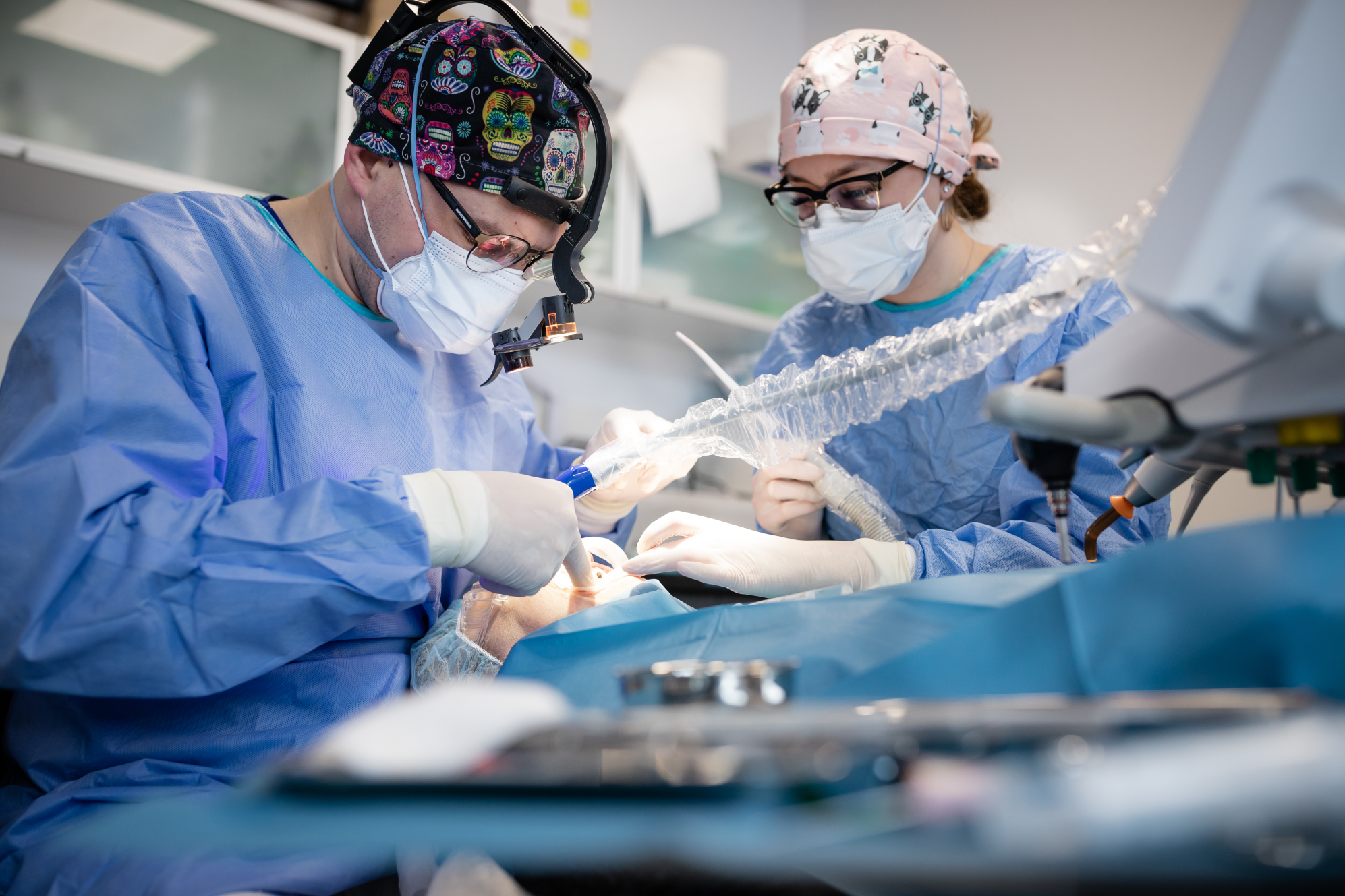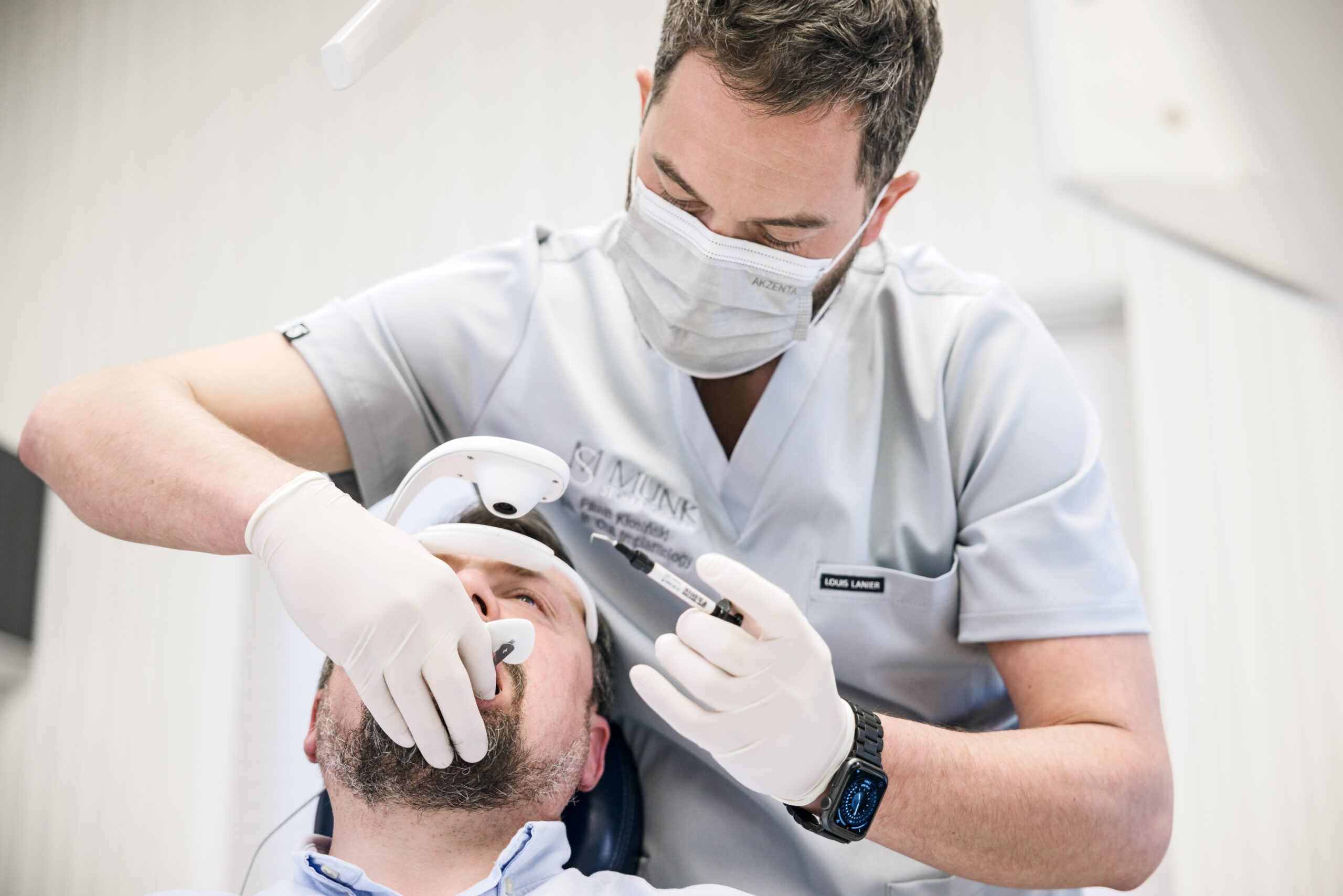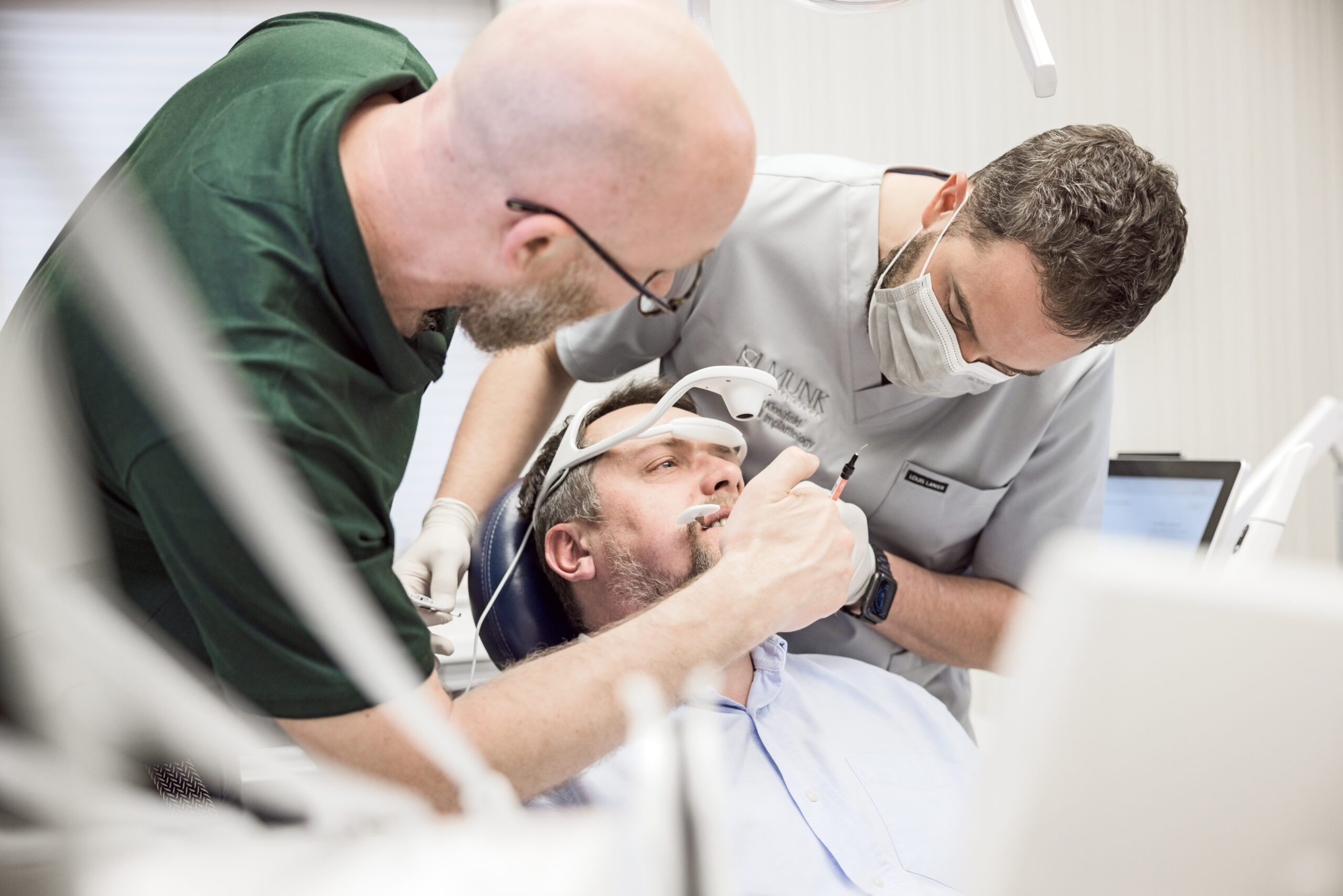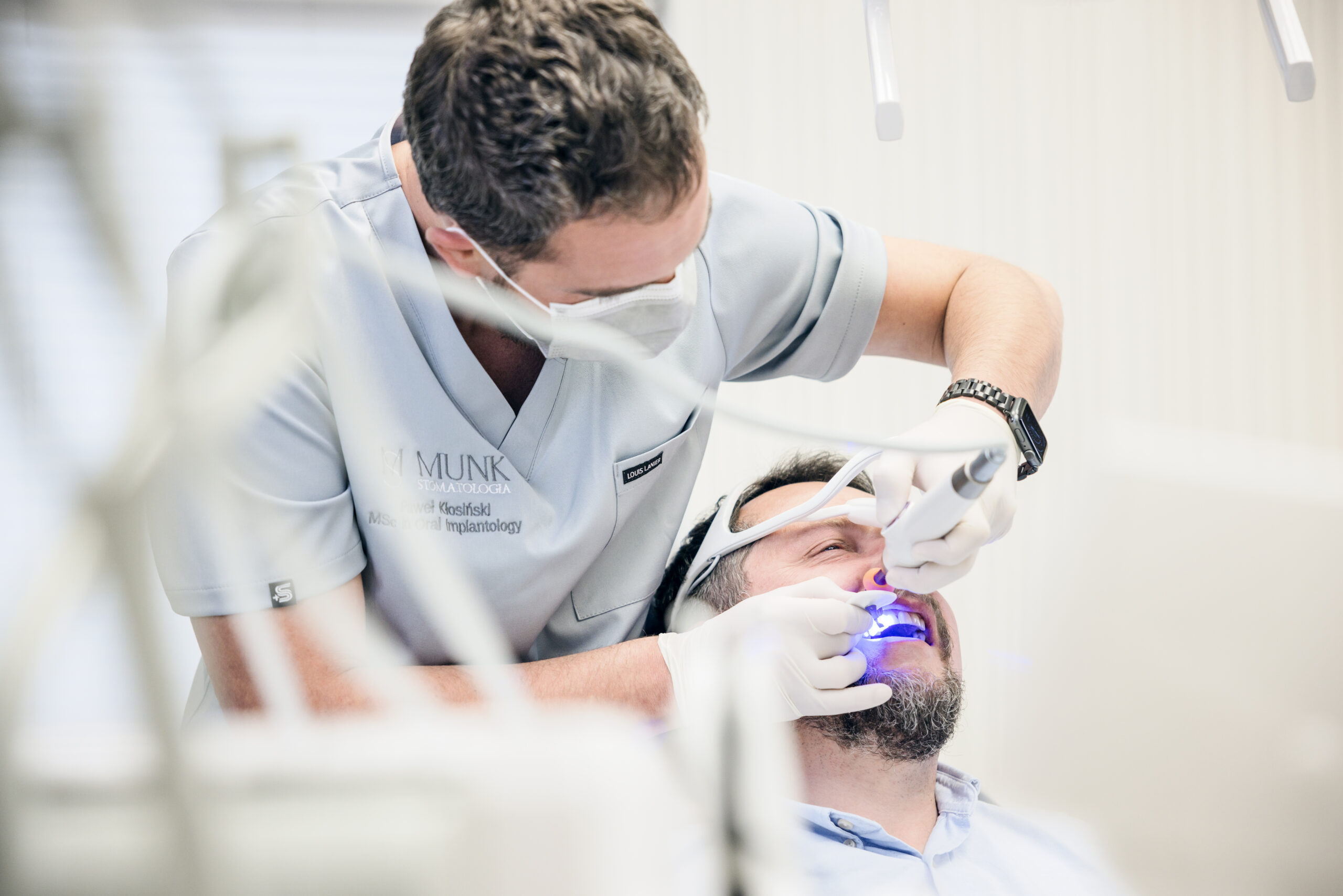

Implantoprosthetic Curriculum
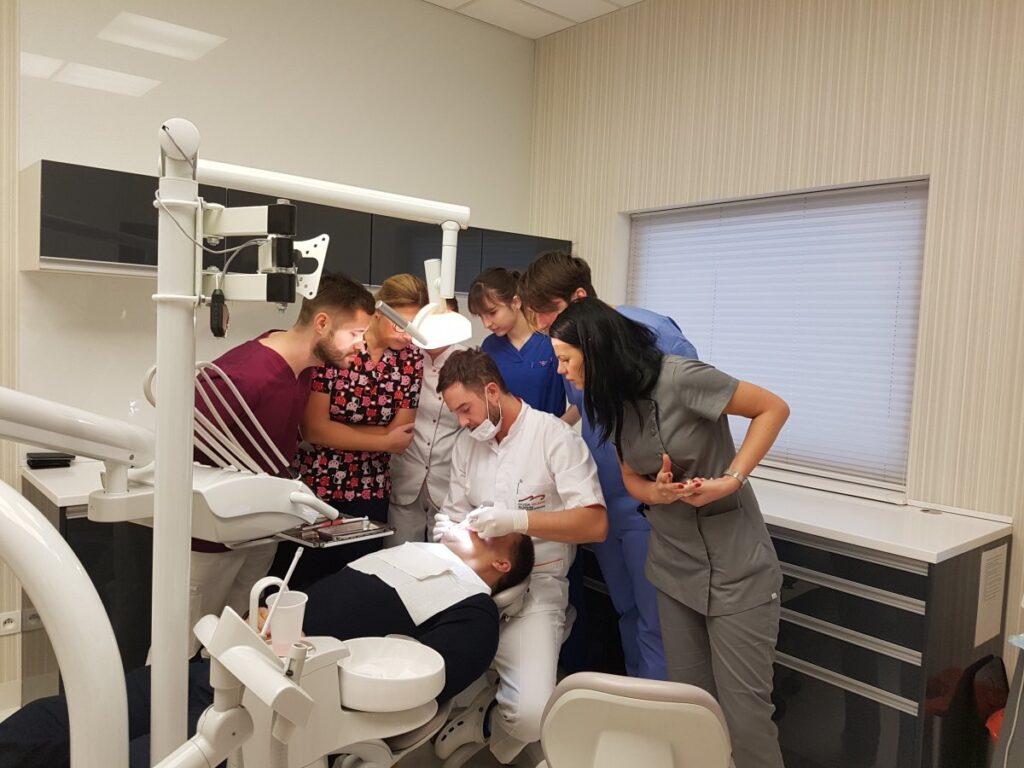
- 24 hours of patient teaching + workshops + lectures = 44 hours of teaching.
- Practical information only.
- STEP BY STEP from a single crown on an implant to full restorations.
- Classic technologies + state-of-the-art technologies.
- Each participant receives 44 learning points.
- Number of places limited, groups of 6 students.
- Course language:
- Polish
- English
Programme
Paweł Kłosiński MD, Master in Oral Implantology
- Treatment planning, backward planning.
- Diagnostic modelling: Waxup, Mockup.
- Types of implant prosthetic work: crowns, bridges, overdentures.
- Indications and contraindications for specific types of work.
- Determinants of success in selected treatments.
- Biomechanics in implantoprosthetics.
- Instrumentation, procedural algorithms.
- Materials used in implantoprosthetics.
- Implant exposures - procedural techniques.
- Methods for shaping the outgrowth profile.
- Transfer impressions / scanning.
- CAD-CAM system. Possibilities and limits.
- Temporary supplements.
- Key test, substructure fitting, handover of work.
- Tightened / glued-in complements.
- Conditions for long-term treatment success.
- Patient adaptation to new oral conditions.
Workshop: materials, parts, instrumentation, techniques used in implantoprosthetics.
Jakub Munk MD, Master in Oral Implantolgy
- Basics of occlusion, why occlusion is important. Documentation in occlusion.
- Discussion of basic methods of establishing occlusion in dentate patients, in partial deficiencies, in edentulous patients. Collaboration with the technician taking into account occlusion. Equipment used to analyse and record the occlusion.
- Aesthetics at the expense of occlusal height, as much as we can afford without compromising the functioning of the US as a whole, the method of diagnosis (CT, X-ray), cooperation with the technician (occlusal recorders) and safe adaptation to the new occlusal height.
- Preparing the patient for a change in occlusal conditions - occlusal splinting, multistage, multidisciplinary treatment. Chronology of work.
- Multi-specialist collaboration in the treatment of difficult patients - with collision problems.
- Determination of occlusion and masticatory muscle tension-basic methods of diagnosing functional disorders, diagnostic modalities and basics of physiotherapy and pharmacotherapy. Perioperative management of patients undergoing major structural changes: extractions, grinding, lengthy implant procedures, time-consuming process of fabricating a new prosthetic restoration. The need to bring the masticatory muscles into physiological tension during this period and to maintain normal tension throughout the treatment period and adaptation to prosthetic restorations
- Basic principles of occlusion and their application in implantoprosthetics.
- Concept of supporting and guiding cusps, canine guidance, group guidance, bilateral balanced occlusion.
- Occlusion in implantoprosthetics - safe occlusion concepts: -Payne's (cusp-bruise, in long centric teeth grated), Thomas's (cusp-bruise, two convex surfaces).
- Passive occlusion (reduction of the occlusal surface in the horizontal dimension), passive span concept, reduction of the masticatory surface.
- Determination of the optimal loading direction of implants, elimination of shear and rotational forces. Transfer of forces according to the long axis of the implant.
- Careful with the remodelling of the structure, if you are doing an extension of the short-circuit area it should be enlarged symmetrically.
- Occlusal supports (contact points) in the axis of the implant, or close to its centre.
- Overjet, overbite of approximately 1 mm.
- Flat joint path angle (normally 33 degrees), implantoprosthetics 30 degrees. Small cusp gradients, flat, less wedging.
- The issue of tooth mobility during chewing vs. mobility (or lack thereof) with implants - the concept of slow loading. The principle of not bonding own teeth to implants in combination work. Prosthetic planning element in the initial stages of treatment - use of substrate, analysis of own tooth mobility, susceptibility to forces during chewing and during para functional loading (increased tooth mobility).
- Decision on how to fix prosthetic work on implant-supported abutments: screw-on or cemented work?
- In screw-retained works, multi-point occlusal contacts are more difficult to rebuild due to the need to close the screw holes. Cemented work rebuilds occlusion better, machined or cast metal work allows for sharp contouring and precision. Ceramic works machined at high temperatures are characterised by unpredictable shape and random occlusal contacts between occlusal surfaces.
- Types of prosthetic restorations used in implantoprosthetics in patients with suspected functional US disorders - peace of mind in the maintenance phase of implantoprosthetic treatment (bruxcir, abradable porcelain, composite teeth in removable work, splint to prevent excessive stress between elements of the prosthetic restoration after a change in the spatial relationship in the US).
- Does the type of material used in a fixed or removable implant-based restoration change the load experienced by the alveolar bone? Damping elements such as composite facing, elastic inlays. More firmly anchored elements, i.e. more heavily loaded, transmit greater forces to each other. A prerequisite for the longevity of a prosthetic restoration is a correctly planned occlusion which is adapted to the existing occlusal situation.
Paweł Kłosiński MD, Master in Oral Implantology
- Modern technology in implantoprosthetics - integration of scanning and CBCT imaging
- Comprehensive planning of implantoprosthetic treatment using new technologies:
- Scanning the patient using a CBCT scanner and a 3Shape® Trios3 intraoral scanner,
- Combining CBCT images and intraoral scans in Implant Studio,
- planning of implant placement based on combined images,
- designing a surgical template based on the planned implant position,
- design of the prosthetic restoration according to the planned implant position,
- printing of surgical template and provisional reconstruction.
- The use of occlusion-correcting splints as support for implant treatment.
- The concept of correcting malocclusion with Clear Aligner splints.
- Possibilities of using splints for tooth repositioning in prosthetics and implantoprosthetics with regard to aesthetics and functionality of the future restoration.
- Application of thermoforming in implantology and implant prosthetics.
Krzysztof Pluta MD
Workshop: intraoral scanning, model scanning, traditional transfer impressions.
Paweł Kłosiński MD, Master in Oral Implantology
- Documentation and archiving of treatment stages and results.
- Complications in implantoprosthetics and how to deal with difficult situations - Troubleshooting.
- Maintaining the effects of implantoprosthetic treatment.
- Specifics of hygiene of the implant patient.
- The effect of implant treatment on the patient's normal pronunciation.
- Clinical and technical aspects of the fabrication of implant-prosthetic restorations (lecture/discussion).
- Summary.
TIMETABLE
| Name | Dates of courses | Price |
|---|---|---|
XX EDITION - JANUARY 2024 Recruitment closed | 25.01.2024 – 26.01.2024 15.02.2024 – 16.02.2024 14.03.2024 – 15.03.2024 18.04.2024 – 19.04.2024 | EUR 3 700 |
XXI EDITION - SEPTEMBER 2024 Recruitment closed | 26.09.2024 – 27.09.2024 24.10.2024 – 25.10.2024 21.11.2024 – 22.11.2024 12.12.2024 – 13.12.2024 | EUR 3 800 |
XXII EDITION - OCTOBER 2024 Recruitment closed | 2.10.2024 – 4.10.2024 6.11.2024 – 8.11.2024 | EUR 3 800 |
| Name | Dates of courses | Price |
|---|---|---|
XXIII EDITION - JANUARY 2025
|
23.01.2025 – 24.01.2025 13.02.2025 – 14.02.2025 13.03.2025 – 14.03.2025 24.04.2025 – 25.04.2025 |
EUR 3 700 |
XXIV EDITION - SEPTEMBER 2025
|
18.09.2025 – 19.09.2025 30.10.2025 – 31.10.2025 20.11.2025 – 21.11.2025 11.12.2025 – 12.12.2025 |
EUR 3 800 |
I am very satisfied with the whole Curriculum. Paweł Klosiński, the lecturer, a very good lecturer and a very nice person. There were a lot of questions, he answered each of them substantively, everything was presented in a very methodical, clear and lucid manner. During the course there was an opportunity to assist and participate in procedures, which is great for such trainings. I will recommend it! XX Edition - Implantoprosthetic Curriculum

Jakub Ratka
MD
I have been looking for a long time for a training course which could provide me with the scope I wanted and I have absolutely no regrets about having chosen this course. A lot of theoretical knowledge, backed up by practice. An incredible amount of knowledge, a huge amount of knowledge, but presented in a very accessible way, such that I can now easily go to a patient on Monday and offer them the best possible service. XX Edition - Implantoprosthetic Curriculum
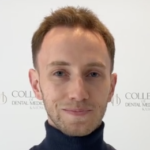
Szymon Nowak
MD
At the training we inserted implants, it was very intense. We had 6 procedures, because very much in the implants inserted we just finished a mega large patient procedure with the insertion of 4 implants, with a sinus lift, With PRF, Yes, a very intense time spent.

Marta Katarzyńska-Konwa
PhD, MD
The training is mega, very professional, Dr Munk is a great teacher, mentor and gives us a lot of very valuable advice, which we can use and are very happy with.
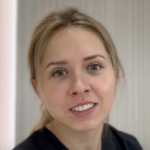
Katarzyna Czarzasta
MD
It was very good, it was what I expected. Nice atmosphere, training conducted at the right pace. I recommend !

Janusz Banasik
MD
I feel recharged, with knowledge and new skills. It was certainly an intense three days. However, I think that I, as well as the other participants, have learnt a lot from these classes. We screwed in our first implants, so that was also extra.
